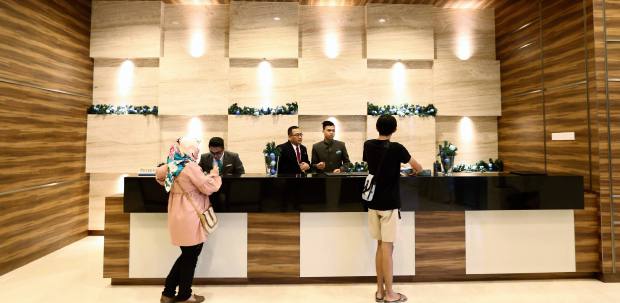SUGAR may be a non-nutritive empty calorie and it robs the body of vitamins and minerals but it is one seasoning like salt and tamarind that is used generously in Malaysian cooking.
People in the east coast states, for example, add sugar to everything they cook. The curry for the lempeng (pancake) is sweet, so is the sambal ikan tongkol that comes with the nasi lemak for breakfast. Nasi minyak, with all the trappings, is also sweetened to taste.
At the Media Prima-National Heart Institute (IJN) corporate social responsibility event in Terengganu in which I participated in some time ago, I was asked if we had added sugar to the sardine sambal we were cooking for the volunteers.
So, it was not too much of a surprise to us when the kampung folk in Seberang Takir and Kampong Banggol Binjai told us “Alhamdulillah, sihat… cuma kencing manis saja (Thank God, we are healthy… only diabetic)”, after they went through the free health checks offered by IJN. Our guess was that they were happy they were cleared of any heart complications; the diabetes they can handle.
Scientists say eating too much sugar may not exactly cause diabetes but eating too much of any food, including sugar, can cause us to gain weight and that the resulting obesity predisposes us to diabetes.
The Stanford University School of Medicine says, however, that a large epidemiological study has suggested that sugar may also have a direct link to diabetes. Researchers, examining data on sugar availability and diabetes rates in 175 countries over the past decade found that increased sugar in a population’s food supply was linked to higher diabetes rates, independent of obesity rates.
It has been reported that there are an estimated 3.5 million diabetics in Malaysia, said to be the highest among Asean countries. The National Health and Morbidity Survey (NHMS) found that nearly half the Malaysian population are either overweight or obese.
On Monday, the country’s largest sugar manufacturer, MSM Malaysia Holdings Bhd, asked for another 29 sen hike in the sugar price. It had asked for a 40 sen increase but was given the nod to increase the price of sugar by 11 sen instead, effective March 1. Sugar is now priced at RM2.95 per kg. A 29 sen price increase would see the price shoot up to RM3.24 per kg.
Now, I would support a price hike for health reasons but not for the purpose of ensuring the company’s profitability as per the reason given by MSM. While price is clearly a key profit driver, the company should look at other areas that can help drive profitability, such as reducing costs, increasing turnover, increasing productivity and increasing efficiency. The company can also expand into new market sectors or develop new products or services.
A price hike could also backfire and be deemed detrimental to the health of the company. A boycott of the product by consumers for a length of time could also affect the company’s revenue and thus, profitability.
In fact, a mere whisper of a hike can result in an increase in the price of other food and dishes using sugar. With the fasting month around the corner, traders at Ramadan bazaars could increase the prices of kuih muih and dishes.
There was one particular year when the country was facing a sugar shortage — we had walked the entire length of the road where the Ramadan bazaar was and we couldn’t find any stalls selling kuih muih. My theory then was that the traders had turned from making kuih muih to lauk pauk. It is a known fact that traditional Malay kuih muih use a generous helping of sugar. Even if they can find enough sugar to make the kuih muih, there is a likelihood that they will have to increase the price.
Similarly, if the government grants MSM’s request, this scenario will repeat itself. Back then, you could buy three pieces of kuih for RM1. After a while, it became three kuih for RM2. And the size of the kuih has become smaller.
Some years ago, you could buy a kuih or two, a main dish, a dessert and a drink with a RM10 budget a day, but I wonder what you can buy for the same amount when Ramadan begins next week.
We keep complaining about rising prices of food, but we have no choice but to still buy it for our break fast as some of us have not the time to leave the office and be home on time to cook a meal.
Granted, we all need to cut down our sugar consumption, but a price hike would not be effective. Then again, there is no guarantee that consumers will cut down, if not eliminate, their consumption of the sweet crystalline carbohydrate, which is typically extracted from sugar cane.
We need to continuously promote a healthy lifestyle and ingrain in people’s mind the need to take care of themselves. It is unfortunate that health campaigns are run only for a period of time and some die a natural death soon after they are launched.
More often than not, it is when a family member or a close friend is inflicted with a health problem that we are jolted into taking action to change our lifestyle.
In my own household, we have cut down on sugar consumption for several years now because my mother was diagnosed with diabetes. Even though now she has successfully managed to control her blood sugar level, we continue to have less sugar in everything we eat or drink.






